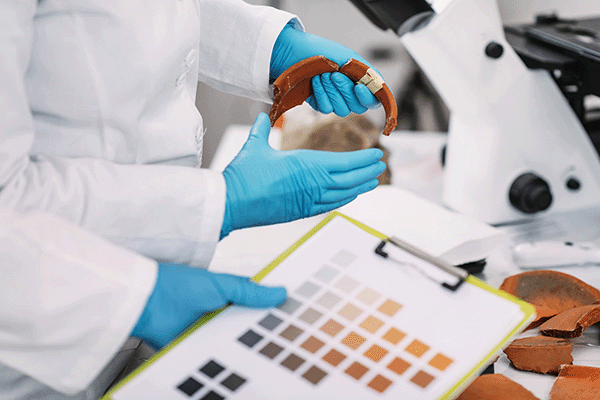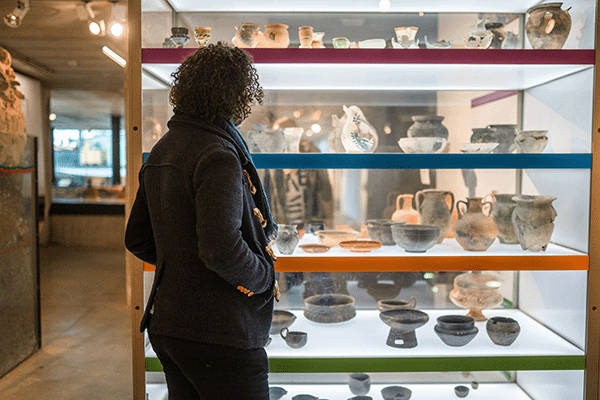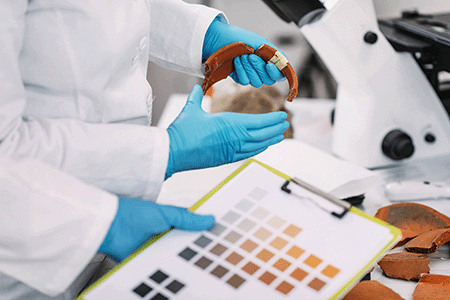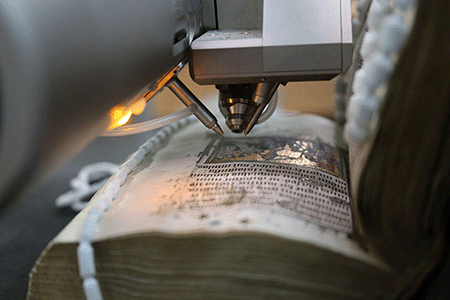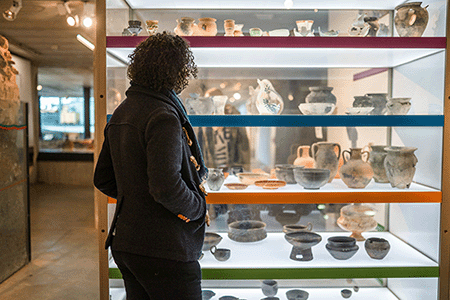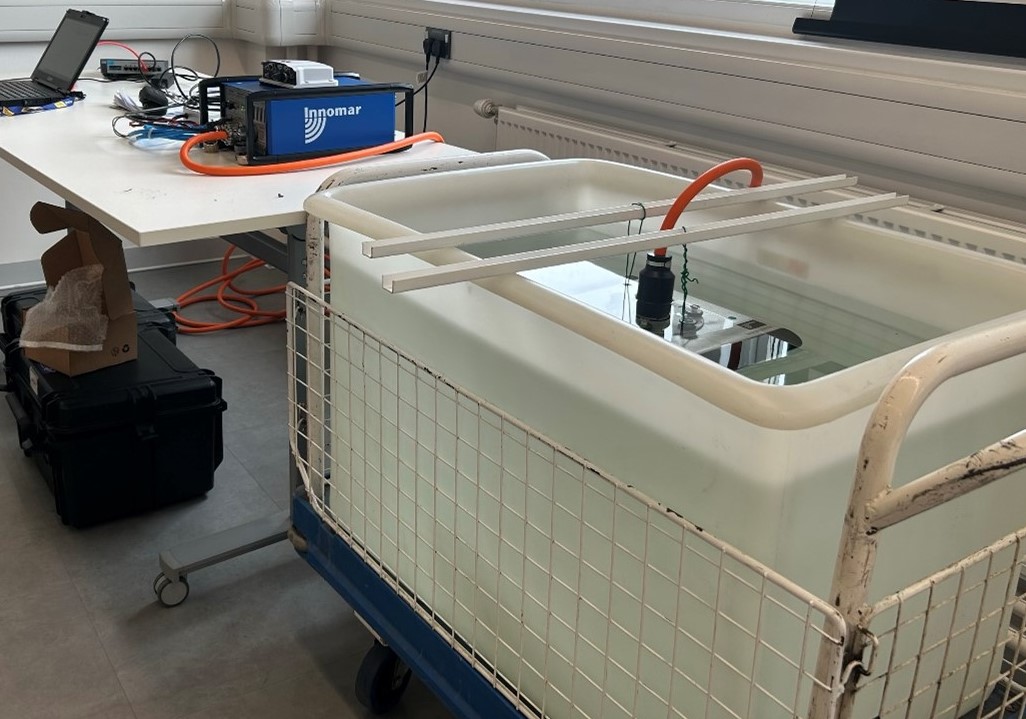On a bright afternoon, the RICHeS team visited the University of Bradford to see how cutting-edge technology is unlocking hard-to-access landscapes. Hosted by Dr Cathy Batt, project lead for the Tranche 1 RICHeS’ project, and her team, RICHeS was keen to hear how their project From Land to Sea: a facility for prospection, landscapes and people is developing as the institution works to establish the new Submerged Landscape Archaeology Facility in 2026. The project utilises various mobile equipment across coastal landscapes and wetlands, enabling the analysis of challenging environments and bridging the traditional divide between land and sea studies.
Immersive global exploration with the Igloo visualisation cylinder
The RICHeS project builds on decades of expertise in landscape archaeology and AHRC CapCo investment enhancing the University of Bradford’s digital research capabilities. While on site in Bradford, the RICHeS team experienced a virtual journey from Orkney to a Tanzanian fish market using the Igloo visualisation cylinder, funded by CapCo. This immersive tool enables the public to engage with research data in innovative ways, such as observing glacial transformations over a millennia right beneath your feet.
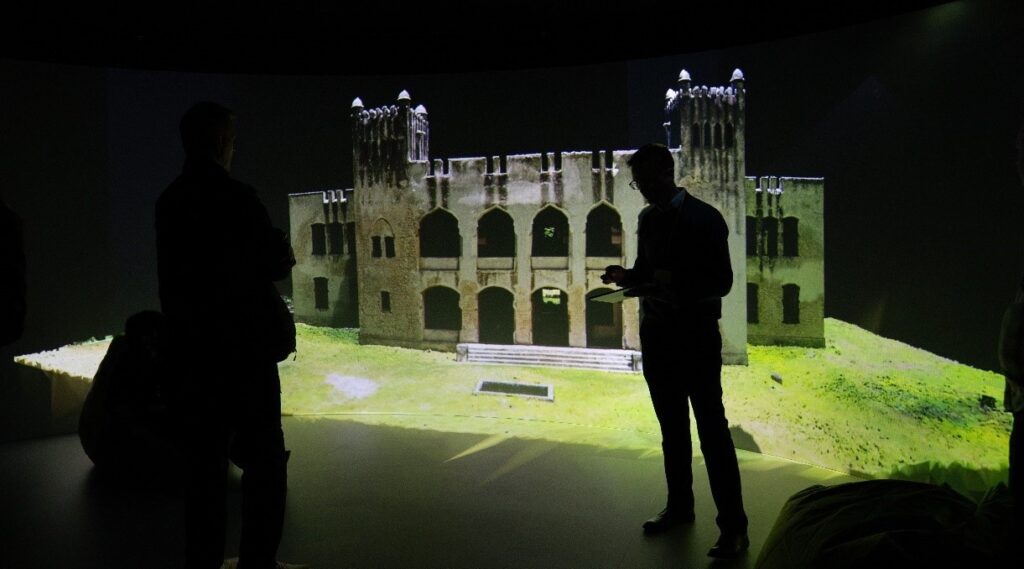
Within the Igloo visualisation cylinder. Image copyright: University of Bradford
Reaching the inaccessible with mobile equipment
During the visit, the RICHeS team examined a collection of prospection equipment designed for mobility, facilitating data collection across the UK and globally. Building on CapCo investment, RICHeS has enabled the upgrade of a magnetometer to include submergible cables and double the number of sensors from eight to 16. Magnetometers are used to measure magnetic fields through processing the signals detected by the sensors. They are used in landscape prospection to enable surveys of terrains and map subsurface features. Enhanced capacity in this allows for the more rapid survey of larger areas. The teams’ magnetometer drones can also be used to survey land that cannot be walked on due to soil fragility. Collaborations with the National Trust on the Farne Islands and locally at Malham Tarn, along with other national and international partners, are underway with continued development anticipated.
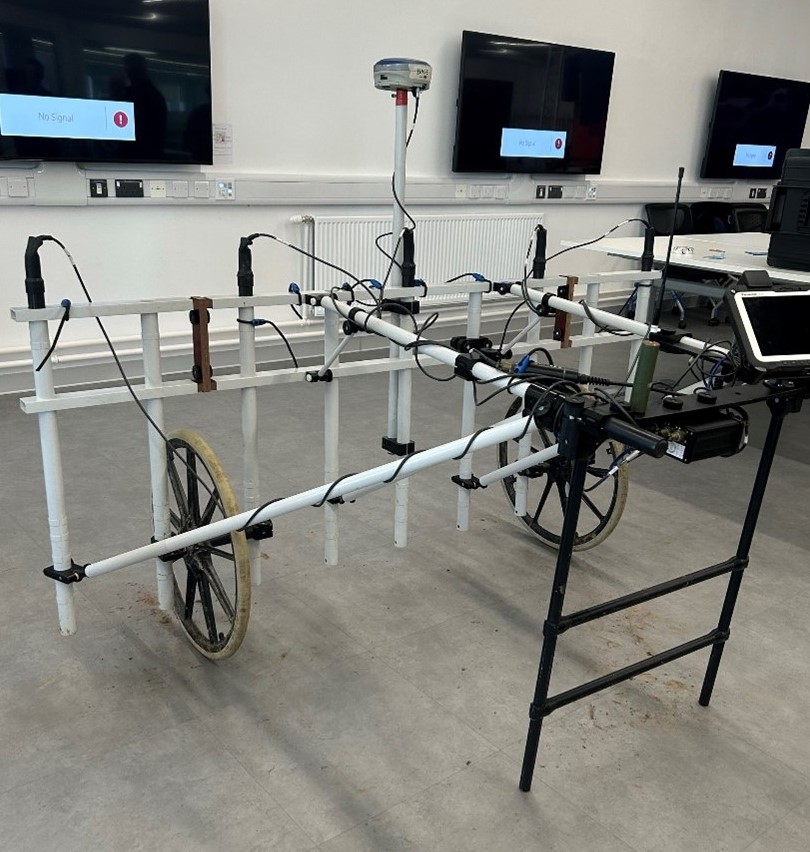
Magnetometer that will be upgraded to 16 sensors.
Innovations in submerged landscape archaeology
The RICHeS’ funded Submerged Landscape Archaeology Facility is deploying cost-effective, agile prospection technologies to analyse hard-to-access locations, highlighting the value of these landscapes. RICHeS were introduced to a newly acquired remote-operated INNOMAR compact profiler. This device exemplifies collaboration with manufacturers to create innovative solutions; its reduced size and weight allow for easy global transport, significantly enhancing their capabilities. The submerged sensor, paired with a top box and an inertial measurement unit (IMU) facilitates marine prospection. It can easily be attached to a small boat and can operate in shallow waters and in depths up to 50 metres. RICHeS observed data interpretation from this equipment using new software that has also been purchased through RICHeS. This was demonstrated by a team member supporting indigenous communities in Florida following hurricane damage.
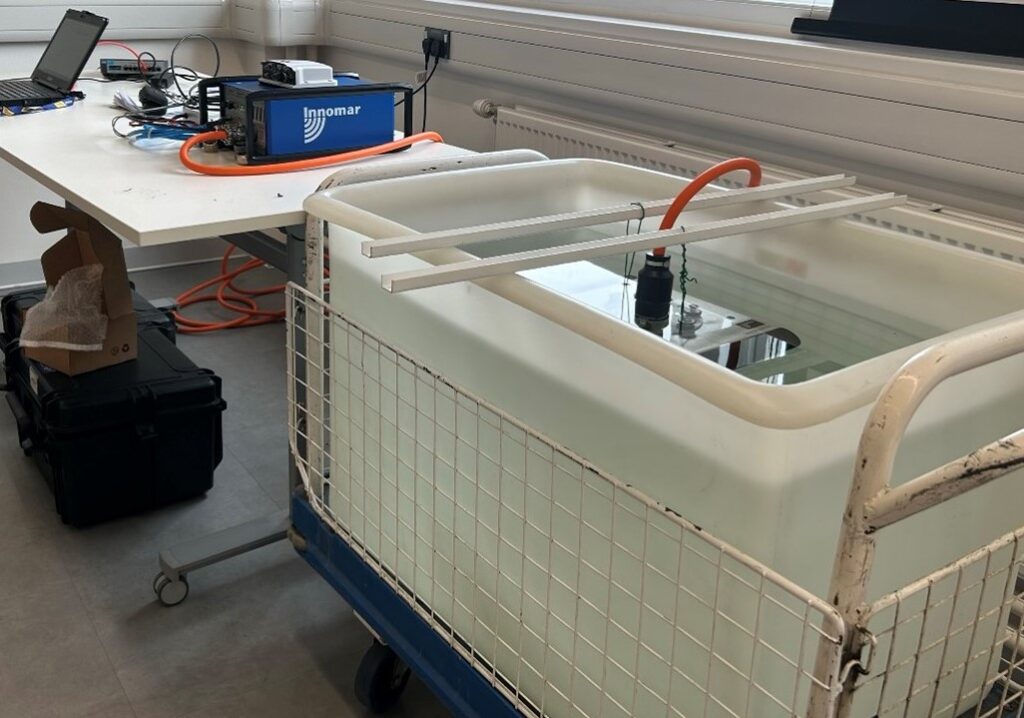
INNOMAR profiler sensor (in water), with top box and small white inertial measurement unit (IMU).
Bradford 2025
As the UK’s City of Culture for 2025, Bradford is gearing up for an exciting year of cultural celebrations, with the University of Bradford playing a key role. The RICHeS team are excited to see RICHeS and CapCo-funded equipment and expertise in action, including an archaeological excavation in the city’s Lister Park. By blending cutting-edge archaeological research with cultural events, the University is bringing history to life while strengthening its commitment to community engagement and heritage preservation.
Dr Cathy Batt shares…
“The investment from AHRC for the Facility for Prospection, Landscapes and People at the University of Bradford is extremely exciting. The innovative new equipment will allow users to investigate some of the world’s most threatened landscapes, particularly those vulnerable to the effects of climate change. It was lovely to have the opportunity to show the RICHeS team some of what has been achieved so far and to discuss future plans.“

